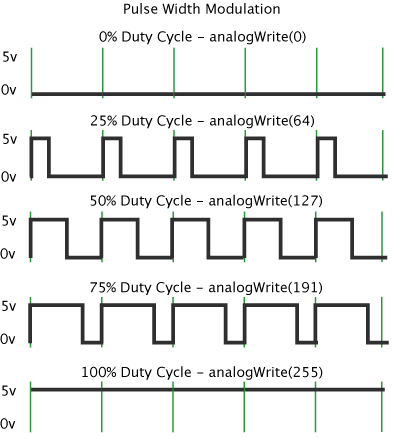Alhamdulillah, now I finally found the code that works for my circuit. It works beautifully as I have expected. Here is the code:
#include <LiquidCrystal.h>
int pin = 0; // analog pin
int tempc = 0,tempf=0; // temperature variables
int samples[8]; // variables to make a better precision
int maxi = -100,mini = 100; // to start max/min temperature
int i;
int TIP122pin = 9;
int fanspeed = 0;
int fanStemp = 0;
LiquidCrystal lcd(12, 11, 5, 4, 3, 2); // Customize for your connections.
void setup()
{
Serial.begin(9600); // start serial communication
lcd.begin(16,2); // set up the LCD's number of columns and rows
pinMode(TIP122pin, OUTPUT); // Set pin for output to control TIP122 Base pin
analogWrite(TIP122pin, 255); // control the fan speed by changing values from 0 to 255
delay(200);
}
void loop()
{
tempc = 0;
for(i = 0;i<=7;i++){ // gets 8 samples of temperature
samples[i] = ( 5.0 * analogRead(pin) * 100.0 ) / 1024.0;
tempc = tempc + samples[i];
delay(1000);
}
tempc = tempc/8; // better precision
tempf = (tempc * 9)/ 5 + 32; // converts to fahrenheit
if(tempc > maxi) {maxi = tempc;} // set max temperature
if(tempc < mini) {mini = tempc;} // set min temperature
if ( tempc > 24 && tempc < 37 ) {
fanStemp = tempc + 50;
fanspeed = fanStemp + 100;
analogWrite(9,fanspeed);
Serial.print("Fan started at temp+50+100 speed\n");
Serial.print(fanspeed,DEC);
Serial.print("\n");
delay(100);
}
else if ( tempc <= 24 ) {
fanspeed = 0;
analogWrite(9,fanspeed);
Serial.print("Fan off\n");
delay(100);
}
else{
analogWrite(9,255);
Serial.print("Fan started at full speed\n");
delay(100);
}
Serial.print(tempc,DEC); // serial print for debugging all serial.print commands
Serial.print(" Celsius, ");
Serial.print(tempf,DEC);
Serial.print(" fahrenheit -> ");
Serial.print(maxi,DEC);
Serial.print(" Max, ");
Serial.print(mini,DEC);
Serial.println(" Min");
lcd.setCursor(0, 0); // set the cursor to (0,0)
lcd.print(tempc,DEC); // print temp in C and F on the first row of the lcd
lcd.print(" C, ");
lcd.print(tempf,DEC);
lcd.print(" F");
lcd.setCursor(0, 1); // set the cursor to (16,1)
lcd.print(maxi,DEC); // Print max temp and min temp on the second row of lcd
lcd.print(" Max, ");
lcd.print(mini,DEC);
lcd.println(" Min.");
delay(1000); // delay before loop
}
These are the pictures of the constructed circuit on the breadboard:
The circuit before being plugged with power supply.
The circuit with the power supply, you can see the fan is moving and the LCD display is showing the temperature.













